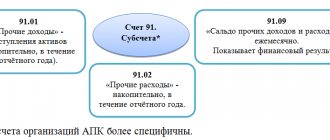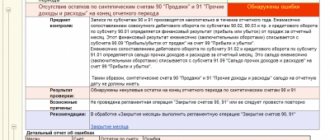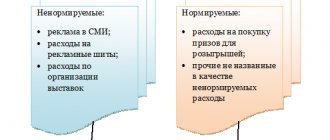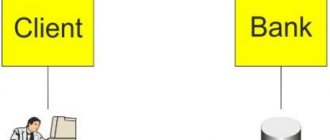List of LLC expenses for OSNO
The list of income tax expenses under OSNO, which a limited liability company has the right to take into account when calculating the taxable base, is divided into 2 groups: related to production and sales, and non-sales.
Costs associated with production and sales are given in Art. 253 Tax Code of the Russian Federation . This list includes, in particular, the following types of costs:
- for the production, storage and delivery of products;
- for payment of wages and insurance premiums;
- for the operation and maintenance of fixed assets;
- for R&D;
- others directly related to production and sales.
The list of non-operating expenses that OSNO LLC takes into account when calculating the tax base is given in Art. 265 Tax Code of the Russian Federation . These include, for example:
- leasing payments;
- interest on obligations;
- costs of issuing own securities and servicing purchased ones;
- negative exchange rate differences;
- court fees;
- banking services.
What costs can be included in the costs of OSNO?
There are 3 main criteria that inspectors pay attention to ( clause 1 of Article 252 of the Tax Code of the Russian Federation ). Acceptable expenses must be:
- documented;
- economically justified;
- aimed at further profit generation.
Only if all three points are met, an OSNO LLC can take these expenses into account when calculating income tax. In this case, all expenses must be expressed in monetary form.
In addition to the general lists of expenses, the Tax Code of the Russian Federation has a separate list of expenses that can be taken into account to reduce the tax base only within established limits . Limitable expenses include:
| Types of costs | Limit | Normative act |
| Certain types of advertising costs | 1% of revenue for the year | pp. 28 clause 1 and clause 4 art. 264 Tax Code of the Russian Federation |
| Entertainment expenses | 4% of labor costs for the reporting period | pp. 22 clause 1 and clause 2 art. 264 Tax Code of the Russian Federation |
| Losses | Within the limits of natural loss | pp. 2 clause 7 art. 254 Tax Code of the Russian Federation |
| VHI, pension insurance | 12% of labor costs | clause 16, part 2, art. 255 Tax Code of the Russian Federation |
| Costs of organizing sanatorium-resort treatment | No more than 50 thousand rubles. for each employee for the tax period | clause 24.2 part 2 art. 255 Tax Code of the Russian Federation |
| Compensation for the use of personal transport | Depending on engine size | Decree of the Government of the Russian Federation dated 02/08/2002 No. 92 |
Limited costs
Save time and money
Accounting services at “My Business” from only 1,667 rubles per month
More details
Expenses in tax accounting
Home — Articles
We are faced with a more global task - to consider the expenses recognized in tax accounting and the conditions for their recognition.
According to paragraph 1 of Art. 252 of the Tax Code of the Russian Federation, in order to calculate profit, the taxpayer reduces the income received by the amount of expenses incurred (except for the expenses specified in Article 270 of the Tax Code of the Russian Federation).
Expenses are recognized as justified and documented expenses (and in cases provided for in Article 265 of the Tax Code of the Russian Federation, losses) incurred (incurred) by the taxpayer. Justified expenses mean economically justified expenses, the assessment of which is expressed in monetary form. Let us also add that any expenses are recognized as expenses, provided that they are incurred to carry out activities aimed at generating income. It turns out that in order for expenses to reduce the tax base for income tax, they must simultaneously satisfy all three conditions specified above. Moreover, from the formal reading of the text of paragraph 1 of Art. 252 of the Tax Code of the Russian Federation, these conditions appear to be independent of each other. It would seem that economic justification should not follow from the presence of two other conditions; it requires some other evidence. But is this true in practice? The Constitutional Court of the Russian Federation periodically reviews the legality of the presence of concepts related to expenses in the Tax Code. This topic is addressed, for example, by the Determination of the Constitutional Court of the Russian Federation dated December 16, 2008 N 1072-О-О. In this case, the applicant considered that the evaluative concepts of “justified costs”, “economically justified costs” and “direction of activity to generate income” allow the use of a subjective approach by tax authorities and courts in determining the validity of certain expenses incurred by the taxpayer and taken into account when calculating tax at a profit. In response to this, the constitutional judges indicated, in particular, that the provisions of paragraph 1 of Art. 252 of the Tax Code of the Russian Federation do not allow, contrary to the applicant’s statement, their arbitrary application, since they require the establishment of an objective connection between the expenses incurred by the taxpayer so that his activities are aimed at making a profit. Moreover, the burden of proving the unreasonableness of the taxpayer’s expenses rests with the tax authorities. In this case, the provisions of tax legislation must be applied taking into account the requirements of paragraph 7 of Art. 3 of the Tax Code of the Russian Federation: all irremovable doubts, contradictions and ambiguities in acts of legislation on taxes and fees are interpreted in favor of taxpayers (see Definitions of the Constitutional Court of the Russian Federation dated 06/04/2007 N 320-О-П, N 366-О-П, dated 02/24/2004 N 3-P and dated July 12, 2006 N 267-O). The Russian Ministry of Finance cannot but accept this position of the Constitutional Court. This department, for example, points out: it must be taken into account that tax legislation does not use the concept of economic feasibility and does not regulate the procedure and conditions for conducting financial and economic activities. This means that the validity of expenses that reduce income received for tax purposes cannot be assessed from the point of view of their expediency, rationality, efficiency or the result obtained (Letters of the Ministry of Finance of Russia dated May 22, 2009 N 03-03-06/1/339 and dated April 14, 2009 N 03-03-06/2/81). But at the same time, the Ministry of Finance insists that the validity of expenses taken into account when calculating the tax base must still be assessed taking into account circumstances indicating the taxpayer’s intentions to obtain an economic effect as a result of real business or other economic activity. And these intentions must be obvious to the tax authority. Frankly speaking, the author deciphers these contradictions in the explanations of officials as follows. Of course, it is up to the taxpayer to decide how he intends to achieve the maximum possible financial result for himself. But no one has yet canceled the task of replenishing the budget with taxes, so the decision on the advisability of a particular operation will ultimately be made by the tax authorities, which is what they do in practice. The classification of expenses for tax purposes is given in table. 2. Table 2
Enterprise expenses
| Related to production and sales (Article 253 of the Tax Code of the Russian Federation) | Non-sales (Article 265 of the Tax Code of the Russian Federation) |
| Material. For wages. Amounts of accrued depreciation. Others | For the maintenance of property transferred under a lease agreement. Interest on debt obligations of any kind. To organize the issue of own securities. Related to the servicing of purchased securities. Negative exchange rate difference. Total difference. To create reserves for doubtful debts. For the liquidation of decommissioned fixed assets |
| Related to conservation and re-preservation. Legal costs and arbitration fees. In the form of fines, penalties and (or) other sanctions. For banking services. To hold meetings of shareholders. For operations with financial instruments of futures transactions. Premiums (discounts) provided by the seller to the buyer. Targeted royalties from lotteries. Other reasonable expenses. Received losses (equated to non-operating expenses) | |
| Not taken into account for tax purposes (Article 270 of the Tax Code of the Russian Federation) | |
| Amounts of accrued dividends. Penalties, fines and other sanctions. Contribution to the authorized (share) capital, to a simple partnership. Expenses for the acquisition and (or) creation of depreciable property. Contributions for voluntary insurance and non-state pension provision, except for those taken into account as part of labor costs. Property transferred by a commission agent, agent, or other attorney. Amounts of deductions to the reserve for depreciation of investments in securities. Funds transferred under credit or loan agreements. Amounts of voluntary membership fees to public organizations. The value of the property transferred free of charge. The value of property transferred as part of targeted financing. Negative difference. Funds transferred to trade union organizations. Amounts of financial assistance to employees. Pension supplements, one-time benefits. Property or property rights transferred as a deposit or pledge. Amounts of target contributions. Entertainment expenses in excess of the stipulated amount. Advertising expenses in excess of established limits. Expenses of a non-profit organization performing the function of providing financial support for major repairs of apartment buildings and the resettlement of citizens from emergency housing stock, incurred in connection with the placement of temporarily available funds. Others that do not meet the criteria for recognizing expenses | |
If some expenses can be attributed simultaneously to several groups of expenses, the taxpayer has the right to independently determine which group he will assign such expenses to.
In addition to those mentioned, there are several other types of expenses for tax purposes:
- direct and indirect;
- standardized and fully taken into account.
The problem of accounting for expenses for profit tax purposes remains one of the cornerstones in disputes between taxpayers and tax authorities. At the same time, the greatest number of disputes is traditionally associated with determining the legality of including other expenses in the included costs, the list of which, as is known, is unlimited. Let's consider accounting for individual expenses from the point of view of their compliance with Art. 264 Tax Code of the Russian Federation.
Expenses, Organization of tax accounting
Inventory of the reserve for vacation pay
Classification of fixed assets from 2021
Inventory of vacation reserve at the end of the year
Adjustment of the income tax base in case of overpayment of taxes included in expenses
Modernize software costs
What costs cannot be taken into account?
The Ministry of Finance of the Russian Federation regularly provides explanations on how to take into account certain types of costs. In particular, LLCs on OSNO cannot take into account the following for calculating income tax:
- The cost of an unfinished construction project in the event of its liquidation. These expenses cannot be taken into account, since such an object is not depreciable property ( letter dated November 23, 2011 No. 03-03-06/1/772 ). However, some organizations think differently, and there are court decisions in favor of the taxpayer ( AS NWO of the Russian Federation dated January 22, 2019 No. F07-16106/2018 ).
- Costs paid for another organization ( letter dated 02/08/2019 No. 03-03-07/7618 ).
- Value added tax, which is assessed upon the gratuitous transfer of services or goods. When calculating the tax base, such property, as well as all costs incurred in this regard, are not taken into account ( letter dated November 12, 2018 No. 03-07-11/81021 );
- The organization's loss from debt forgiveness. The Ministry of Finance equates such losses to property transferred free of charge and applies the same approach to them ( letter dated May 22, 2018 No. 03-03-06/1/34203 ).
- Costs for product samples ( letter dated February 22, 2018 No. 03-03-06/1/11485 ).
- Gifts to the company's clients ( letter dated September 18, 2017 No. 03-03-06/1/59819 ).
It will not be possible to take into account in calculating the tax base under OSNO the expenses that are listed in Article 270 of the Tax Code of the Russian Federation . It contains an extensive list, which includes, for example, dividends, advances and deposits, various excess payments to employees, etc.
Tax authorities will interpret the recognition of such expenses as a deliberate understatement of the taxable base.
Main classification
There are these types of expenses:
- costs of raw materials and materials;
- for the labor of workers;
- capital expenses (depreciation, rent);
- funds spent on production services (insurance, mail, transport);
- special costs (deductions and taxes).
In modern economics, there are several classifications of expenses.
By type, the following types of expenses are found:
- Single element. This includes the costs of raw materials, resources and labor.
- Overhead or indirect costs. These include taxes, depreciation, various deductions, and administrative and business costs. This type is applied separately to each product to calculate the size that constitutes the costs.
- Special costs. These are the costs of making models, transportation and postage costs, as well as bonuses or commissions to employees.
Recognition of expenses for basic assets
LLC expenses can be taken into account under the general taxation system in two ways.
The first of these is the accrual method, which in practice is often called “shipment-based” accounting. ( Article 272 of the Tax Code of the Russian Federation ). This is the most common accounting option as it can be used by all organizations without restrictions.
With the accrual method, costs are taken into account in the period in which they are incurred, regardless of the transfer of money.
The second method is the cash method, or “on payment” accounting. On the contrary, it depends on the movement of money , because Expenses are recognized in the period in which actual payment is made.
However, the cash method is not available to all LLCs. According to paragraph 1 of Art. 273 of the Tax Code of the Russian Federation, only those companies that:
- over the past 4 quarters, they received revenue of no more than 1 million rubles. in each;
- do not belong to credit institutions;
- do not engage in hydrocarbon production;
- are not controlling persons of foreign companies.
The difference between the two cost recognition methods is easy to understand using the example of payroll accounting.
Example
The employee's salary accrued for October amounted to 50 thousand rubles. At the same time, an advance payment in the amount of 20 thousand rubles. paid in October, and the final payment (30 thousand rubles) - in November. When using the accrual method, all 50 thousand rubles. will be included in the company's expenses for October. And with the cash method in October, only 20 thousand rubles will be written off as expenses, and the remaining 30 thousand rubles. will be included in November costs.
Classification of organization expenses
As a result of production, economic and financial activities, organizations incur corresponding expenses.
Definition 1
An enterprise's expenses are a reduction in economic benefits due to the disposal of cash or other property, or the incurrence of liabilities, leading to a decrease in the level of capital.
For effective cost management, classifiers based on various criteria .
The company's cash expenses are grouped according to three main criteria:
- expenses due to profit;
- expenses not related to making a profit;
- forced expenses.
Expenses that are caused by making a profit consist of the costs of production and sale of products, works, services and investments. The costs of production and sale of products, works, services are expenses associated with the creation of goods, works or services, as a result of the sale of which the organization will receive financial profit or loss. Investments are capital investments that are intended to expand production volumes and generate income in the stock or financial markets.
Too lazy to read?
Ask a question to the experts and get an answer within 15 minutes!
Ask a Question
Expenses that are not related to generating income are expenses for social support of employees, consumption, and charitable purposes. Such expenses are aimed at supporting the organization’s reputation, creating a positive social climate in the production team, and thereby increasing the productivity and quality of work of employees.
Compulsory expenses include taxes, social security contributions, expenses for compulsory personal and property insurance, and mandatory reserves.
In the Profit and Loss Statement, expenses are divided into:
- expenses for ordinary activities;
- operating expenses;
- non-operating expenses;
- emergency expenses.
Expenses for ordinary activities are associated with the manufacture and sale of products, the acquisition and sale of goods, as well as expenses associated with the performance of work and the provision of services. This group also includes commercial and administrative expenses.
Operating expenses include:
- expenses associated with the provision of temporary use of enterprise assets for a certain fee;
- expenses associated with the provision of rights arising from various types of intellectual property for a fee;
- expenses from participation in the authorized capitals of other enterprises;
- expenses resulting from the sale, disposal, write-off of fixed assets and other assets, except cash (except for foreign currency), goods and products;
- interest for the provision of funds, credits and borrowings to the organization for use;
- expenses related to payment for services provided by credit institutions;
- other operating expenses.
Too lazy to read?
Ask a question to the experts and get an answer within 15 minutes!
Ask a Question
Non-operating expenses include:
- penalties, fines, penalties for violation of contract terms;
- compensation for losses caused by the organization;
- losses recognized in the reporting year, losses of previous years;
- accounts receivable with expired statute of limitations and other debts that are unrealistic for collection;
- exchange differences;
- expenses from asset depreciation;
- other non-operating expenses.
Extraordinary expenses include expenses arising as a result of extraordinary circumstances of economic and production activities.
The composition of the costs of production and sale of products is as follows:
- material costs;
- labor costs;
- expenses incurred as a result of managing the production process;
- the cost of non-current assets used in the production process.
Material costs include expenses:
- for the purchase of raw materials and supplies that are used in production and for household needs;
- for containers, packaging materials;
- for the purchase of tools, inventory, fixtures, devices, work clothes, laboratory equipment and other property that is not depreciable;
- for the purchase of components, semi-finished products;
- for the purchase of fuel, water and energy for the production process;
- for the purchase of works and services performed by third-party companies, in particular transport;
- caused by the maintenance and operation of fixed assets and other property.
Labor costs include accruals to employees in kind and in cash, incentive bonuses, compensation, bonuses, incentives, employee maintenance costs specified by the legislative norms of the Russian Federation and employment contracts.
Expenses that are associated with managing the production process, the so-called overhead costs, include administrative, management costs, rent for premises, travel expenses, maintenance of the company's vehicles, auxiliary production costs and others.
The cost of non-current assets used in the production process is transferred to costs through depreciation. In accordance with the criterion of homogeneity, costs for core activities are grouped into the following elements:
- material costs;
- labor costs;
- contributions for various social needs;
- depreciation deductions;
- other costs.
In relation to production volume, costs are divided into two large groups:
- permanent,
- variables.
The size of fixed costs does not depend on production volume. They can exist even during plant downtime. This type of cost includes rent for leased fixed assets, depreciation of own fixed assets, salaries of administrative and maintenance personnel, utility bills, postal services, taxes and other expenses.
Variable costs directly depend on output. They increase with the growth of output and decrease with its decrease. Variable costs include: costs of raw materials and materials, semi-finished products, components, fuel and energy for production purposes, salaries of employees of main production, costs of repair and maintenance of production equipment. According to the order in which costs are allocated to the period of profit formation, they are divided into two groups:
- product costs,
- costs for the period.
The costs of a manufactured product are directly related to the production of the product and are determined by the technology of the production process. Product costs are always included in the cost of the product, service or work produced. They are associated with units of production and can be attributed to finished goods in the warehouse or shipped goods and taken into account in calculating profit later than their actual availability.
Period costs depend on the end of the period for which payments are accrued. Period costs increase the cost of goods sold in the period in which they arose and, accordingly, reduce the profit of the enterprise.
Note 1
An analogue of product costs in trade is the cost of purchased goods, in industry it is production cost. An analogue of costs for a period are general production, commercial, and administrative expenses.
Cost management is one of the important management tasks within an organization. For this purpose, classification by cost centers depending on the organizational structure of the enterprise is important. The classification of cost centers requires detail in order to determine for each division one basic indicator that takes into account the workload of a given division and reflects the dependence of costs on output.
Grouping by cost objects is implemented depending on the goods, services or work produced, on which these costs fall. The cost object can be a product, type of service, type of work that is intended for implementation. Semi-finished products are an object of accounting if it is necessary to monitor their profitability and evaluate changes in their inventories. In serial, continuous production, when producing products according to individual orders, the cost object is the order.
Expenses are divided into direct and indirect according to the method of attribution to the cost of accounting objects. In accounting, direct expenses include those expenses that can be directly attributed, according to primary documents, to the cost of a unit of product. Indirect costs include those costs that cannot be correlated with a specific type of product at the time of their occurrence. Such expenses are first accumulated in certain accounts, and then at the end of the reporting period are distributed in proportion to the selected base between types of products.
Picture 1.
The Tax Code also classifies expenses into direct and indirect for income tax purposes. Direct costs, in this case, include material costs, depreciation and labor costs. All other costs are indirect. It should be noted that the Tax Code does not provide for accounting for the cost of a unit of products, but only a method for forming the total costs of an enterprise for the tax period. That is why you cannot use the Tax Code classification for planning and managing an enterprise. It must be used only to calculate the tax base for income tax.
Figure 2. Classification of expenses
There are many other classifiers that help you manage costs consciously, effectively and in a timely manner.
Note 2
Classification of costs allows the use of cost management methods, divided into administrative and economic.
Administrative methods help prevent unreasonable, unauthorized expenses, theft and abuse. Economic methods of cost management include planning and budgeting.
Too lazy to read?
Ask a question to the experts and get an answer within 15 minutes!
Ask a Question
Conclusion
Expenses taken into account when calculating the income tax base on the general taxation system must be confirmed, economically justified and aimed at generating income.
Most LLCs must use the accrual method of accounting for expenses, but some microbusinesses have the right to use the cash method.
To correctly calculate the tax base of an LLC on OSNO, you should carefully study the provisions of the Tax Code of the Russian Federation and the clarifications of the Ministry of Finance to determine whether certain costs can be taken into account. Otherwise, the tax base will be underestimated, which will entail unnecessary attention from the tax inspectorate.
To correctly calculate taxes, fill out reports, and receive expert advice, register in the “My Business” service.
Direct expenses are...
According to Article 318 of the Tax Code, the distribution of sales costs into direct and indirect must be carried out by organizations that use the accrual method to calculate income tax. What relates to direct expenses in tax accounting is discussed in the same article.
First of all, direct costs are material costs regulated by Article 254 of the Tax Code. Among them are:
- expenses for the purchase of raw materials, components and other similar things for the production of goods, performance of work, provision of services, as well as the purchase of various materials for packaging or other preparation of goods for sale;
- this also includes expenses for the purchase of inventory and tools that are required for the production process and do not belong to fixed assets;
- payment of utilities for the operation of production premises;
- purchase of workwear;
- payment for work and services of a production nature, in short, all expenses that may arise in the course of the company’s work in its main activities.
The next category of direct production costs is labor costs. They include the direct salary of the organization’s employees, various bonuses and incentive payments, as well as insurance premiums that each employer is required to pay.
And finally, direct expenses include the amount of accrued depreciation on fixed assets that the enterprise uses in production or in the performance of work and services.
All other types of expenses that, on the one hand, are related to the production process, that is, do not relate to non-operating expenses, but at the same time do not fall under any of the listed types of direct costs, are classified as indirect expenses.
At the same time, the company itself determines and establishes in its accounting policy the method of allocating expenses into direct and indirect. The distribution presented above is only general. So, for example, the salary of the company’s employees as a whole can be divided into the wages of “production” and administrative personnel. It would be logical to classify the latter as indirect costs. The same situation applies to material costs and depreciation charges. After all, such expenses can also be carried out both within the framework of the production process and for the functioning of the organization as a whole, providing for its management and administration and other support structures that are not involved in the direct production of products, works or services.
The meaning of this ranking of costs is that indirect costs for the purposes of calculating income tax are accepted at a time, upon their occurrence and the fulfillment of the general conditions for recognizing costs in tax accounting. Direct costs are taken into account only after the sale of products in the production of which these costs were involved.







